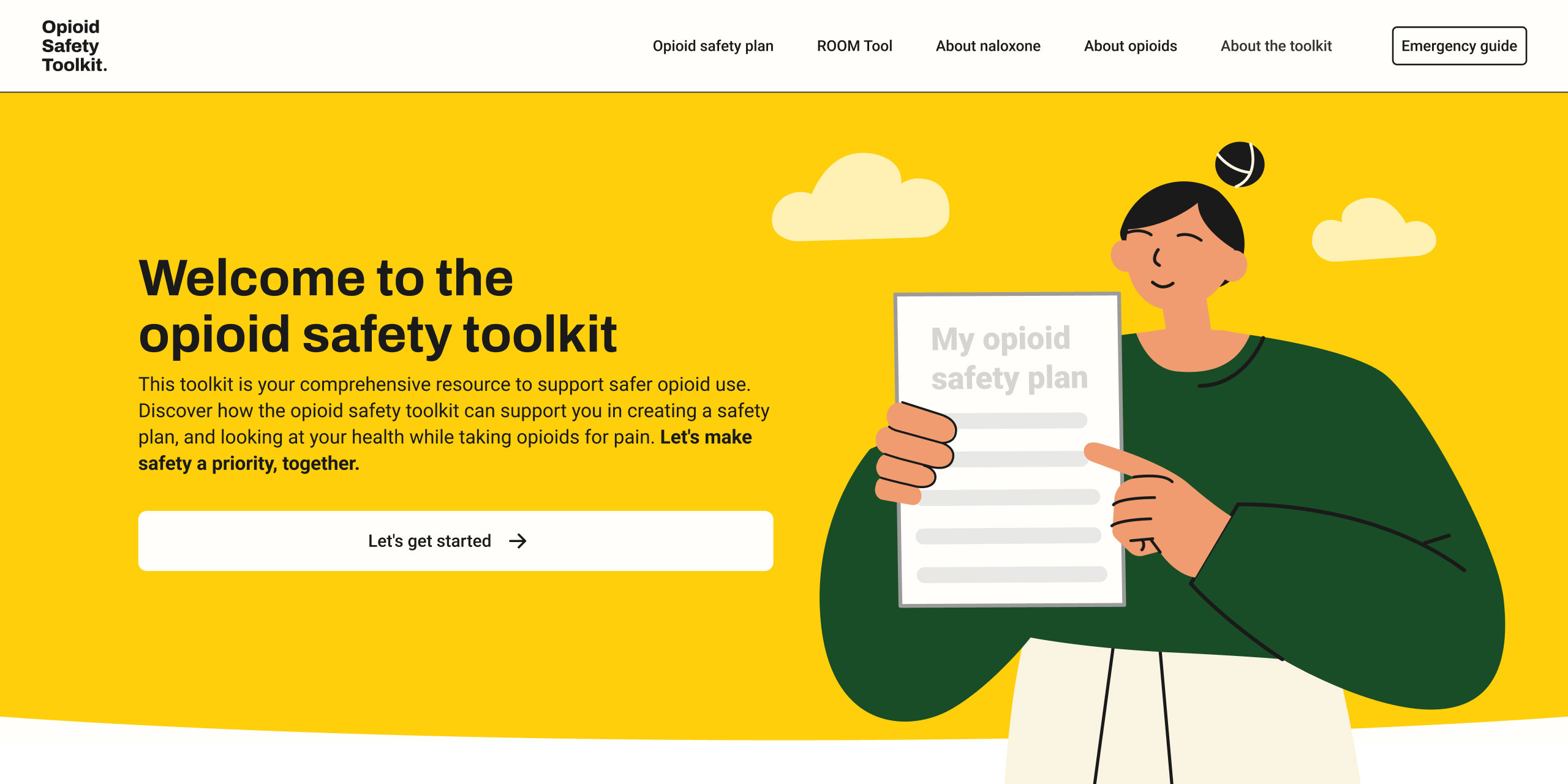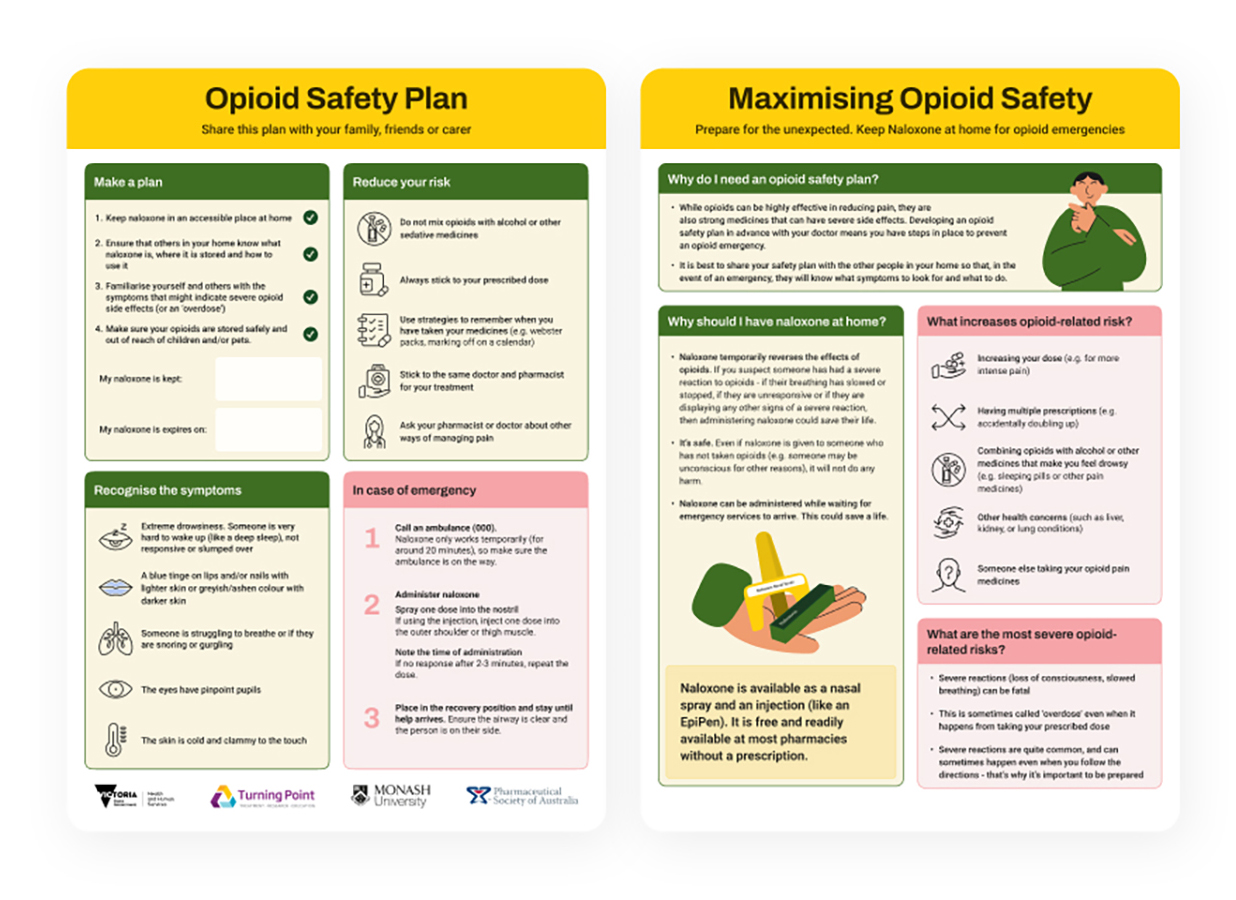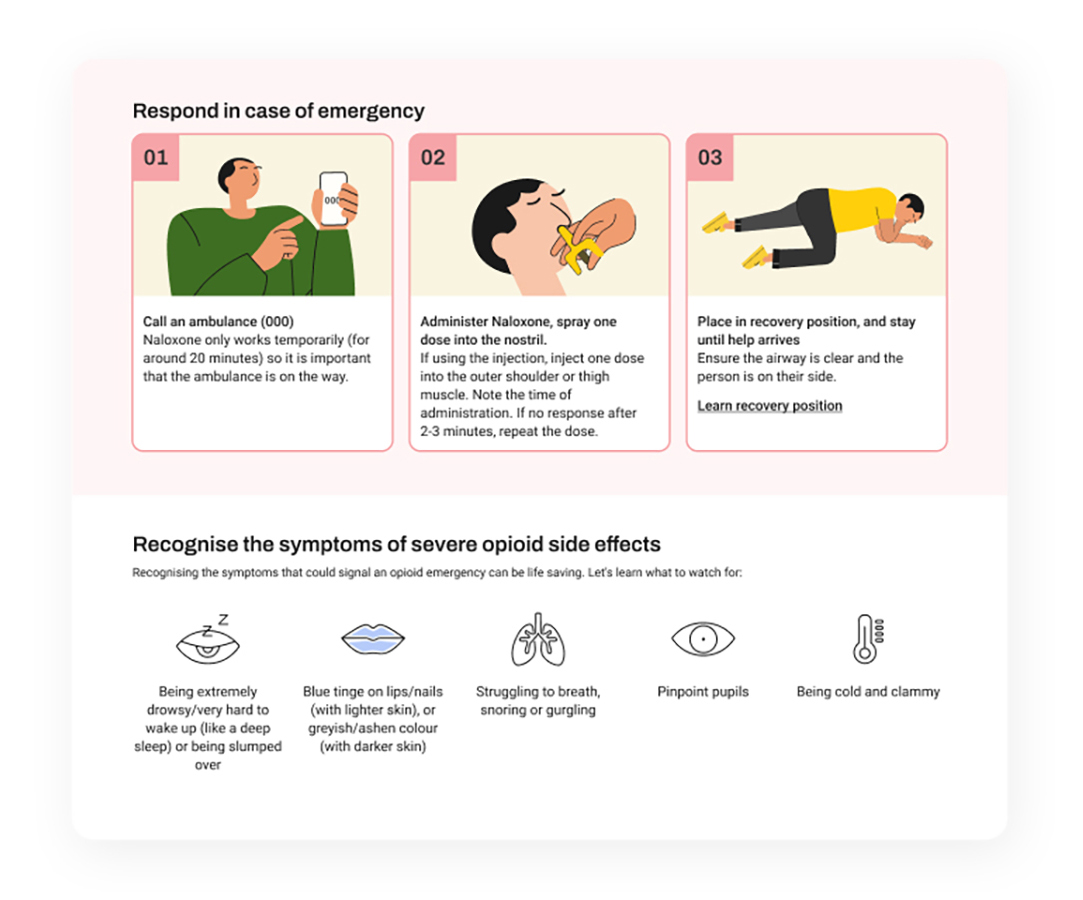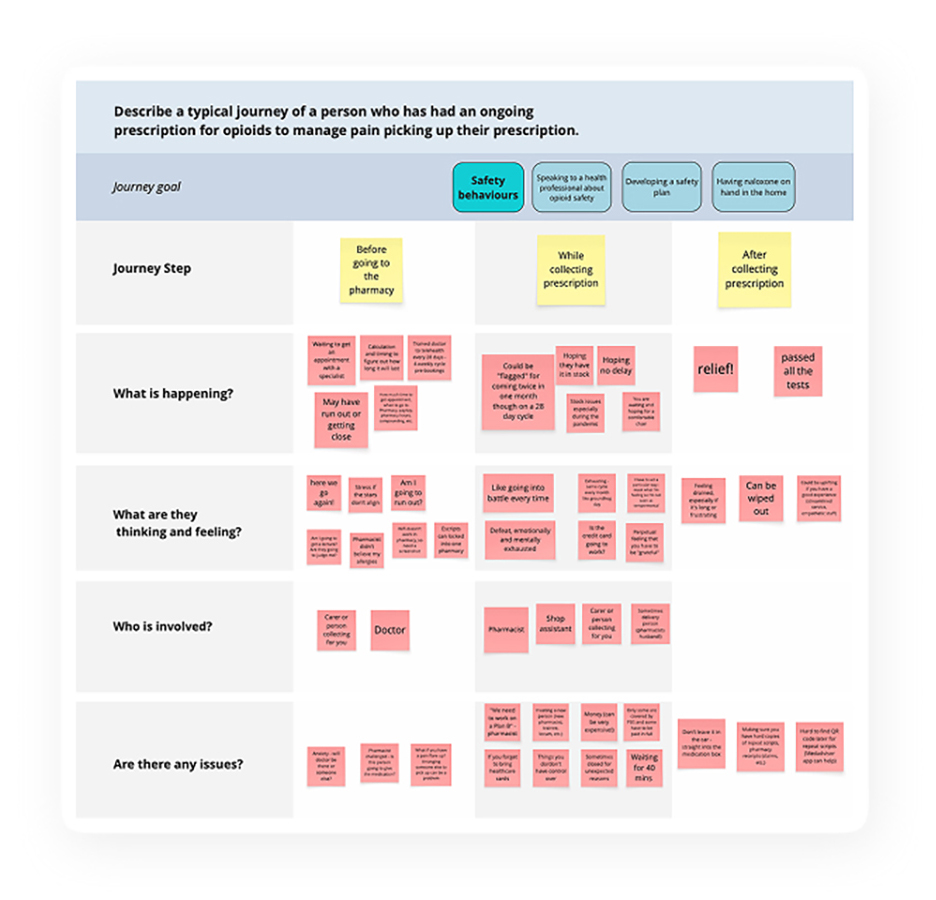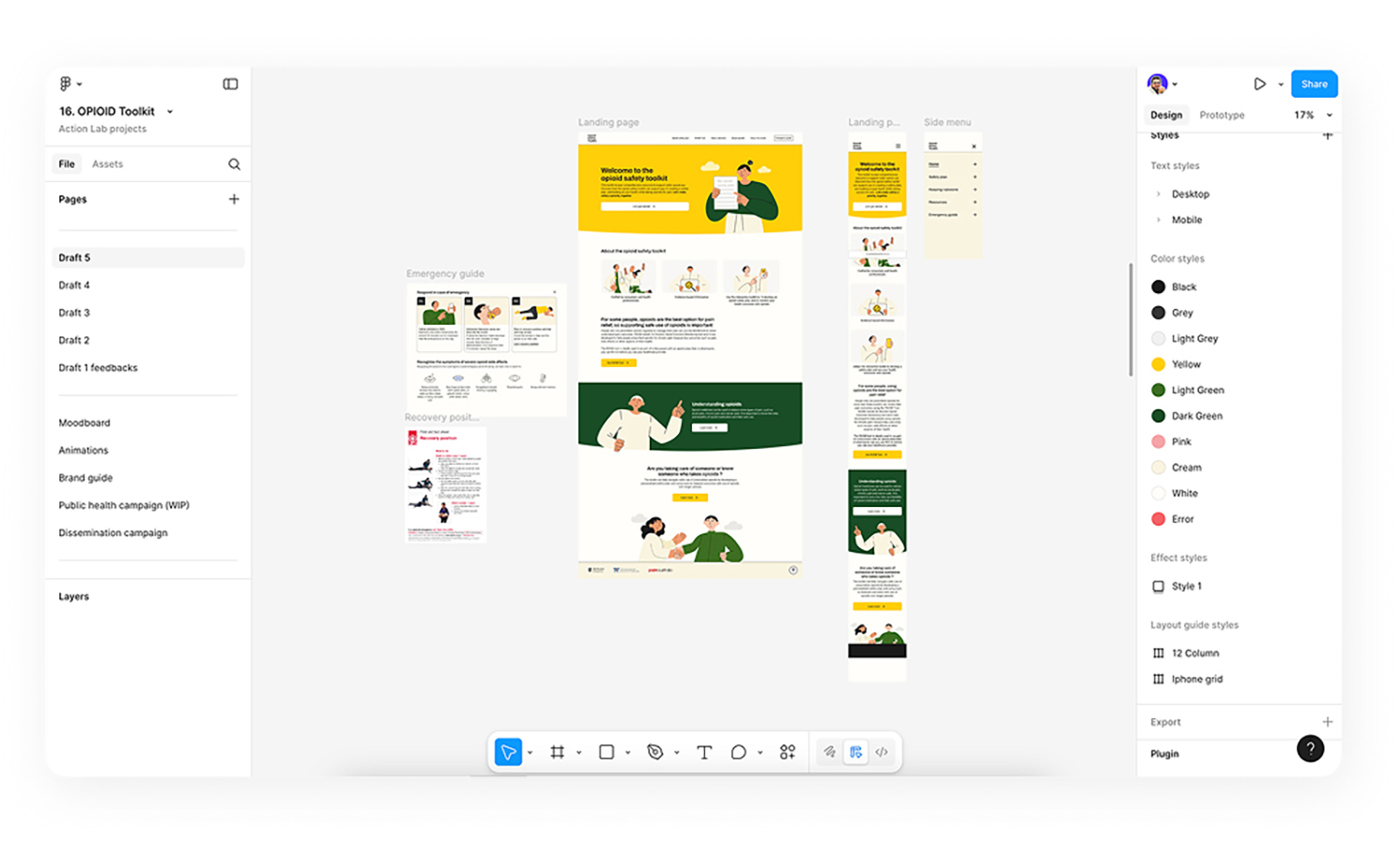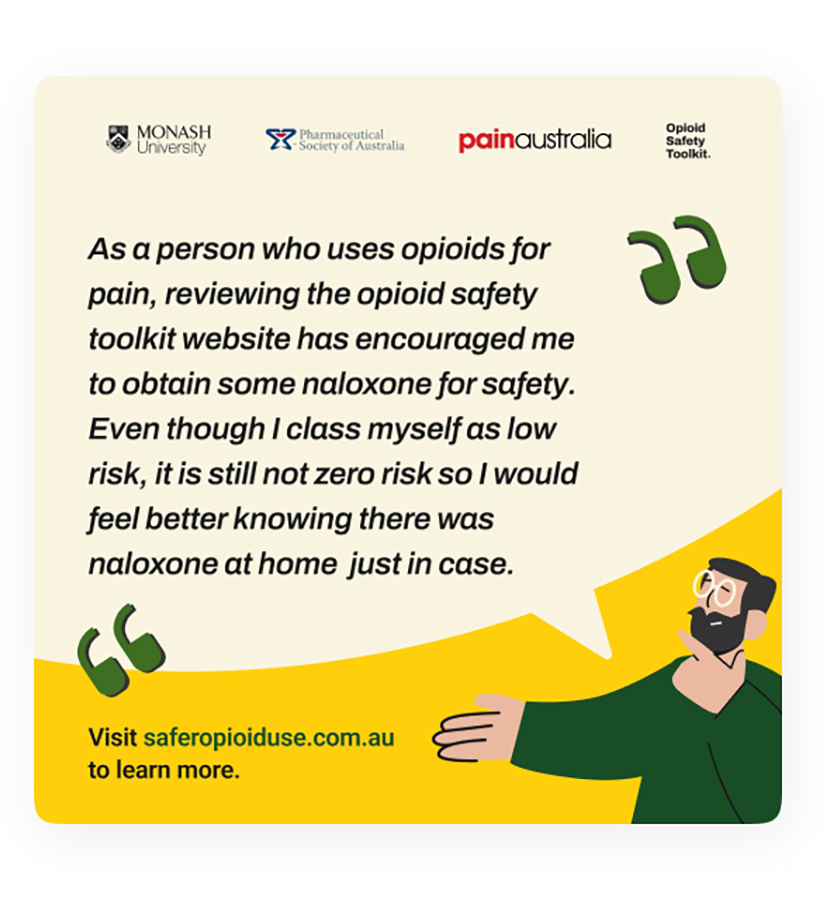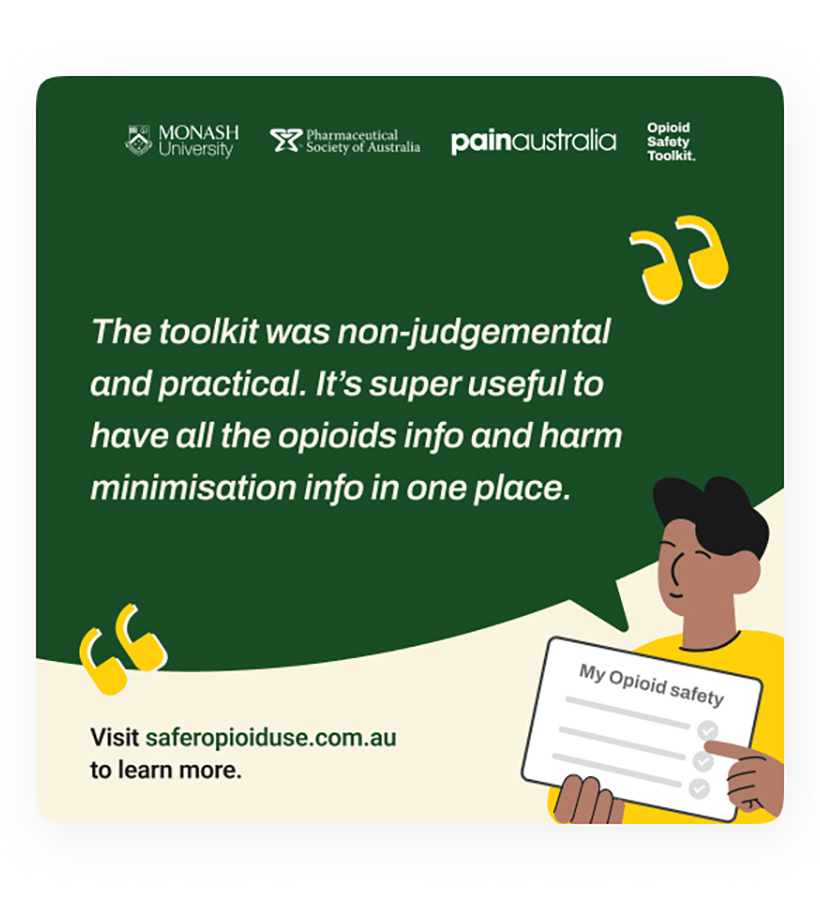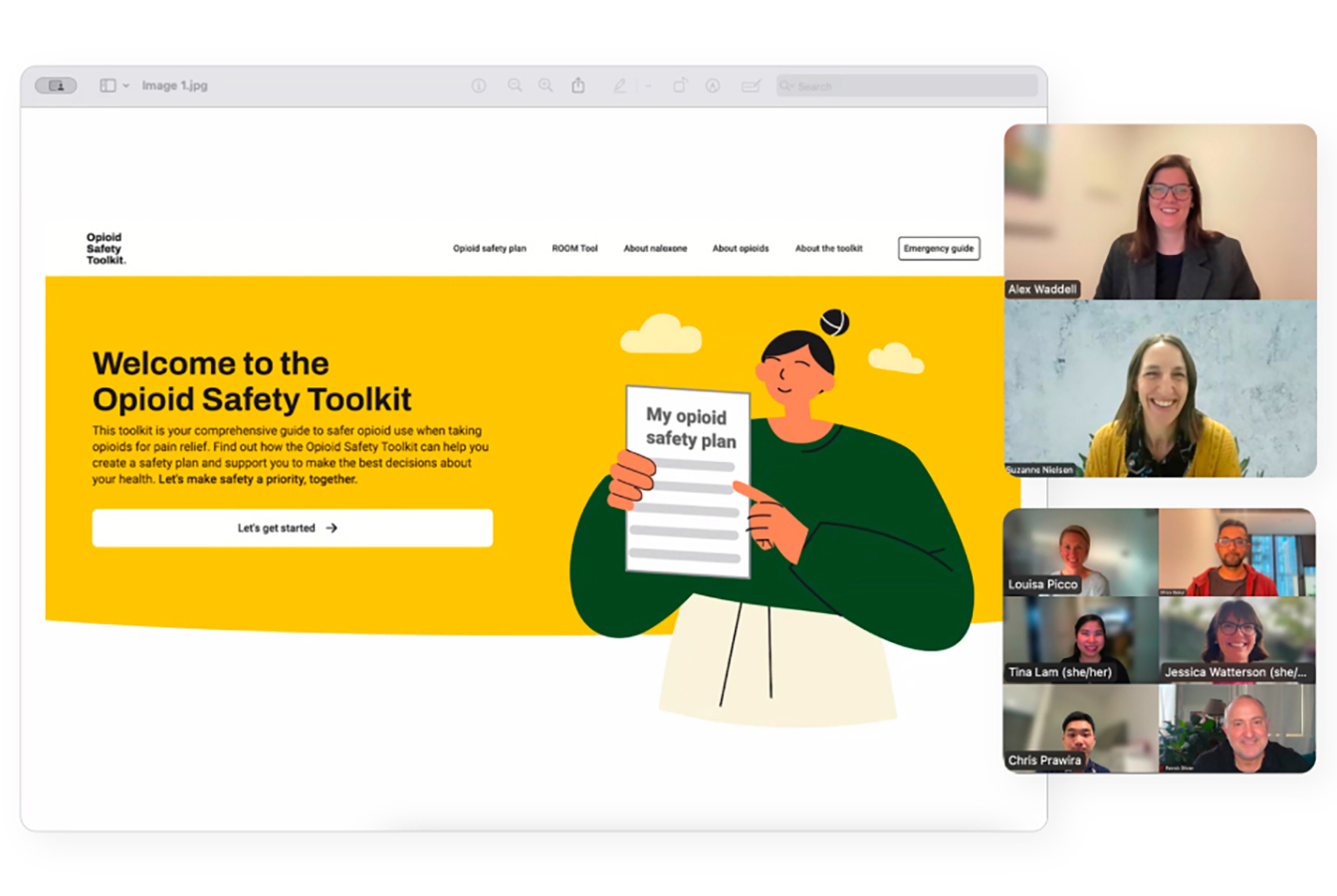The Opioid Safety Toolkit was developed through a rigorous, multiphase national co-design process involving 42 stakeholders, including consumers, healthcare professionals, and advocacy groups. This collaborative approach ensured that the Toolkit was created with and for both those prescribed opioids and those who prescribe or dispense them, while maintaining a consumer-focused design.
The process included distinct phases: first, identifying barriers consumers face in engaging with opioid safety behaviours; second, exploring key touchpoints in consumers’ prescription opioid journeys; and third, iteratively designing and testing solutions to empower safety behaviours — specifically obtaining naloxone, creating personalised safety plans, and discussing opioid use and any concerns with healthcare professionals.
Extensive workshops and user testing sessions refined content, language, and usability, prioritising non-stigmatising, relevant, and tailored information. The service model connects consumers, pharmacists, and healthcare professionals through a layered, co-designed approach supporting engagement at multiple touchpoints. Consumers typically receive an SMS with Toolkit access at opioid dispensing, sent via integration with pharmacy prescribing software. These messages were co-designed to be supportive and motivating.
Additional pharmacy flyers and posters encourage conversations about opioid safety. Pharmacists underwent a dedicated pre-launch education phase to build confidence in stocking naloxone and initiating discussions, supported by webinars, articles, and a dedicated microsite.
To date, over 2,000 pharmacies nationally have agreed to disseminate the Toolkit, and automated SMS integration that provides a link to the Toolkit at the point of opioid supply now facilitates ongoing consumer engagement. This coordinated service model creates a feedback loop where consumers are prompted to act, pharmacists are equipped to respond, and both are supported through consistent, co-designed messaging.
The Toolkit has been accessed over 65,000 times and contributed to a 23% increase in naloxone stocking in Australian pharmacies, demonstrating strong professional execution and exceeding the design brief’s goals.

